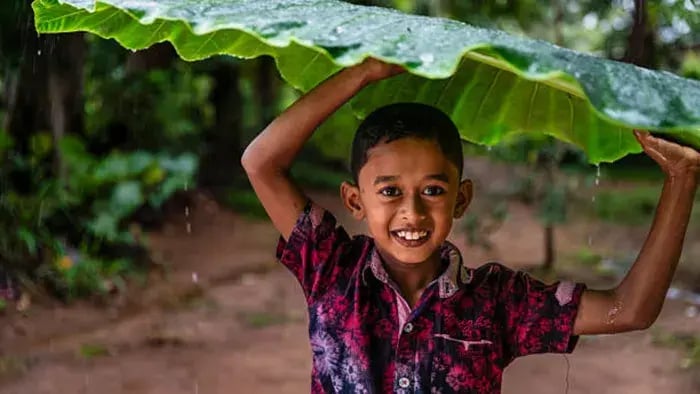- Sight (Vision)
- Hearing (Auditory Sense)
- Touch (Tactile Sense)
- Taste (Gustatory Sense)
- Smell (Olfactory Sense)
Introduction
Every child’s world is full of sounds, sights, tastes, textures, and smells. Nature’s five senses help children explore, understand, and enjoy the world around them. Assisting kids to identify and celebrate their senses turns everyday moments into opportunities to learn and grow.

Each sense has a special job – eyes see colorful butterflies, ears hear music, hands feel soft teddy bears, tongues taste mangoes, and noses smell fresh flowers. Simple fun experiences help children notice how all these senses work together to create memories and discoveries.
Activities that involve touching different objects, tasting new foods, or listening to sounds in nature deepen the connection to the environment. Hands-on experiences improve attention, strengthen memory, and encourage creativity.
Fun Activities To Learn And Explore The 5 Senses For Kids

Sight (Vision)
Sight helps children gather information about their surroundings. Through sight, they learn colours, shapes, distances, and movement, building awareness and problem-solving skills. Mindful seeing sharpens their attention to detail and imagination. These activities are designed to help kids learn and understand how the senses of sight work:
Colour Hunt Walk
Take your child out and turn a simple walk into a colourful mission. Ask them to spot objects of different colors — a red hibiscus, a yellow auto, or a green mango. This trains young eyes to pay attention, improve memory, and appreciate nature’s colours.
Arrange a Rainbow Plate
Using foods like red watermelon, yellow corn, green cucumber, and orange carrots helps your child arrange a rainbow plate. For lactose-intolerant kids, add almond-based dips instead of dairy curd. It teaches colour recognition while linking healthy eating to visual learning.
Puzzle Time
Offer puzzles where they match colours, patterns or fit shapes together. Sorting toys by colour or working on simple jigsaw puzzles develops strong visual processing and builds early problem-solving abilities.
Hearing (Auditory Sense)
Hearing allows children to understand language, enjoy music, detect danger, and stay connected to people around them. Strong listening skills also boost memory and emotional understanding. Below are a few playful ways to teach kids about the sense of hearing:
Nature Sound Walk
Sit together in the garden, balcony, or even near a window. Stay silent for a few minutes and ask your child to list the sounds they hear — chirping birds, rustling leaves, or the sound of rippling water. It builds focus and patience.
Musical Kitchen
Gather everyday kitchen objects like plates, spoons, steel glasses, and fill bowls with pulses or rice. Tap them gently or shake them to create sounds. Ask your child to create rhythms. It improves auditory discrimination and rhythm understanding.
Guess the Sound Game
Use hidden objects to create sounds like tearing paper, tapping a cup or shaking keys. Ask your child to guess each sound. This fun guessing improves active listening and sharpens memory.
Touch (Tactile Sense)
Touch helps children understand temperatures, shapes, and safety. It teaches them how to handle objects carefully, judge comfort, and even express feelings through physical contact. These simple exercises will help kids discover the sense:
Texture Basket
Fill a basket with soft fabrics, crunchy papads, rough coconut shells, and smooth marbles. Ask your child to close their eyes, feel each object, and describe it. This builds sensory vocabulary and tactile awareness.
Make Playdough Creations
Make homemade playdough and let children roll, squish, and shape it freely. Handling soft, flexible textures strengthens small muscles in the fingers while giving sensory input.
Sensory Cooking
While making chapati dough, peeling boiled potatoes or rolling besan ladoos, involve your child. Feeling warm dough or cold vegetables while cooking develops better sensory integration and makes them love homemade food.
Taste (Gustatory Sense)
Taste helps children discover new foods, enjoy eating, and build healthy food preferences. It also teaches caution with unfamiliar or unsafe foods. Here are a few activities for kids to do to understand the senses:
Taste Test with Foods
Conduct a fun tasting session with safe, common foods. Offer banana (sweet), lemon (sour), salted peanuts (salty), and methi leaves (bitter). Talk about each taste and ask your child to describe it in simple words.
Build a Tasting Plate
Make a small plate with cubes of paneer, tofu (for lactose-intolerant kids), slices of cucumber, and boiled corn. Let your child guess each item by tasting. It sharpens the ability to recognize textures, flavors, and boosts adventurous eating habits.
Make a Smoothie Together
Blend fruits like mango, banana, and papaya with almond milk or fortified soy milk for lactose-intolerant children. Let them pick the ingredients, taste, and talk about how sweet, thick, or smooth the smoothie feels.
Smell (Olfactory Sense)
Smell is closely linked to emotions and memory. Pleasant scents can uplift mood, while unpleasant ones can warn of danger (like spoiled food). Simple activities for kids to understand the olfactory sense:
Scent Matching Game
Fill small bowls with strong natural scents like cinnamon, cardamom, mint leaves and ajwain seeds. Blindfold your child and let them smell and guess each. This builds strong smell memory and sharpens attention to detail.
Cooking with Aromas
While cooking dal tadka, roasting cumin seeds, or baking fresh roti, ask your child to smell the different stages. Connecting smell to food deepens appreciation for homemade meals and engages curiosity.
Scented Playdough Fun
Make playdough and add natural scents like vanilla essence or rosewater. Let your child explore the feel and smell together, creating a multi-sensory playtime that strengthens emotional bonding too.
Conclusion

Teach your child to see, hear, touch, taste, and smell, and they will have a stronger foundation for learning, joy, and a lifelong connection to the world around them.
Her love for storytelling began with reading her grandfather’s speeches, where Tarishi saw the power of words in creating lasting memories. Combining her passions for food and writing, she has turned her life into a fulfilling path of sharing stories that celebrate flavours and how food brings communities together.
The views expressed are that of the expert alone.
The information provided in this content is for informational purposes only and should not be considered a substitute for professional medical advice, diagnosis, or treatment. Always seek the advice of your physician or another qualified healthcare provider before making any significant changes to your diet, exercise, or medication routines.
















